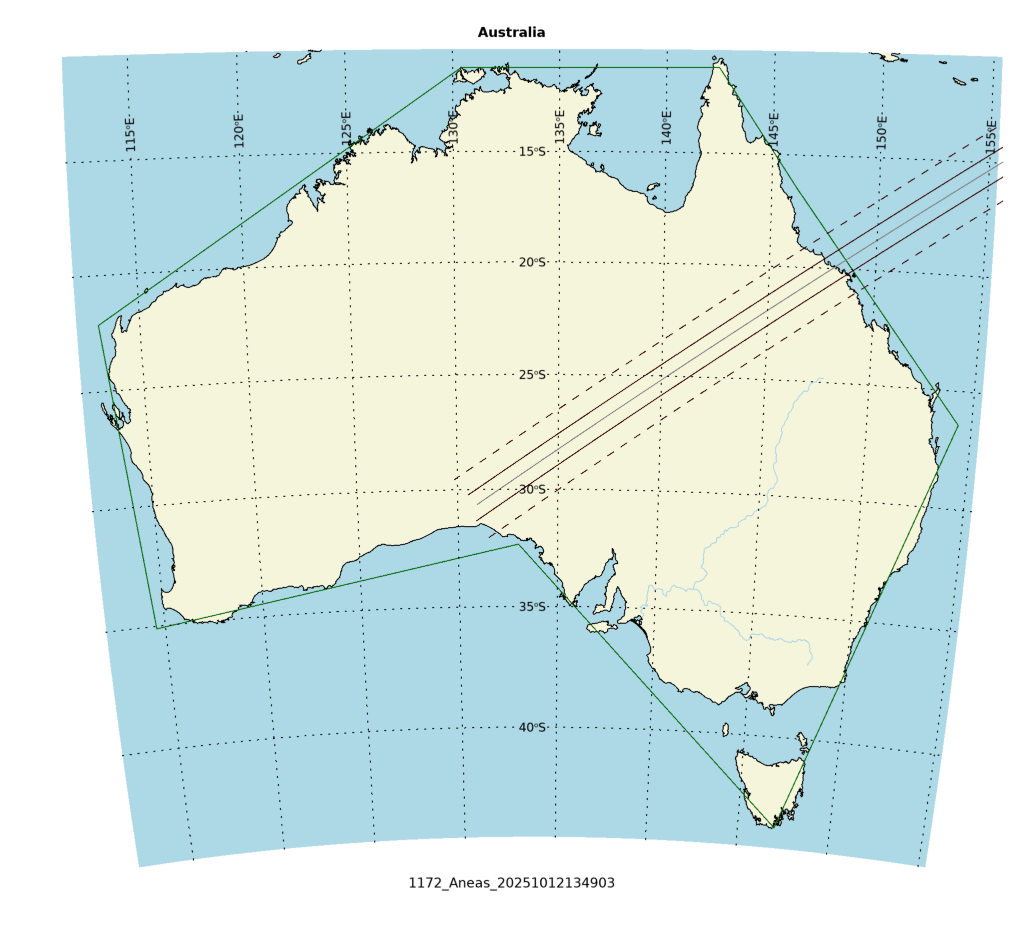
Occultation event with (1172) Aneas, event index number 1365
Regions able to see the event: Australia
Geocentric closest approach at 2025/10/12 13:49:03 UTC
J2000 position of star is 04:04:44.4 +24:34:53
Equinox of date position of star is 04:06:17.5 +24:39:00
Star is 30 degrees from the moon. Moon is 63% illuminated.
Stellar brightness G=16.3, apparent brightess of occulting body is G=13.6
Use an exposure time of 2.00 seconds with the standard RECON-QHY system.
SNR of 3.6 per integration for unocculted signal
Expected flux drop is 8% with SNR of 0.3 for the occulted depth (per occulted point)
Apparent velocity is 10.1 km/sec on the sky relative to the star, or, 10.7 arcsec/hr.
Position angle of asteroid motion is 65.8 degrees
The recommended exposure time corresponds to 20.2 km per image.
The 1-sigma error in the time of the event is 1.0 seconds.
The 1-sigma cross-track error in the shadow position is 31.2 km.
The sky-plane scale is 3395.8 km/arcsec.
Diameter estimates:
138.7 km assuming a 5% albedo, maximum of 13.7 sec for a central chord
56.6 km assuming a 30% albedo, maximum of 5.6 sec for a central chord
Cross-track diameter of 118.0 km used for deployment plan.
Star training set for 1172_Aneas, (2025/10/12 13:49UT) Object RA Dec mag sep mel Aldebaran 04:37:24.2 +16:33:32 0.8 10.88 27 44Zet Per 03:55:45.6 +31:57:29 2.8 7.67 31 36 Tau 04:05:54.5 +24:10:30 6.1 0.48 30 PPM 093194 04:05:10.6 +25:00:55 9.3 0.44 30 PPM 093198 04:05:21.4 +24:28:15 10.3 0.28 30 1172_Aneas 04:06:17.5 +24:39:00 13.6 30 Positions are for equinox of date


Star training set for 1172_Aneas, (2025/10/12 13:49UT) Object RA Dec mag sep mel Aldebaran 04:35:55.4 +16:30:29 0.8 10.88 27 44Zet Per 03:54:07.9 +31:53:01 2.8 7.67 31 36 Tau 04:04:21.7 +24:06:21 6.1 0.48 30 PPM 093194 04:03:37.3 +24:56:45 9.3 0.44 30 PPM 093198 04:03:48.4 +24:24:06 10.3 0.28 30 1172_Aneas 04:04:44.4 +24:34:53 13.6 30 Positions are for J2000